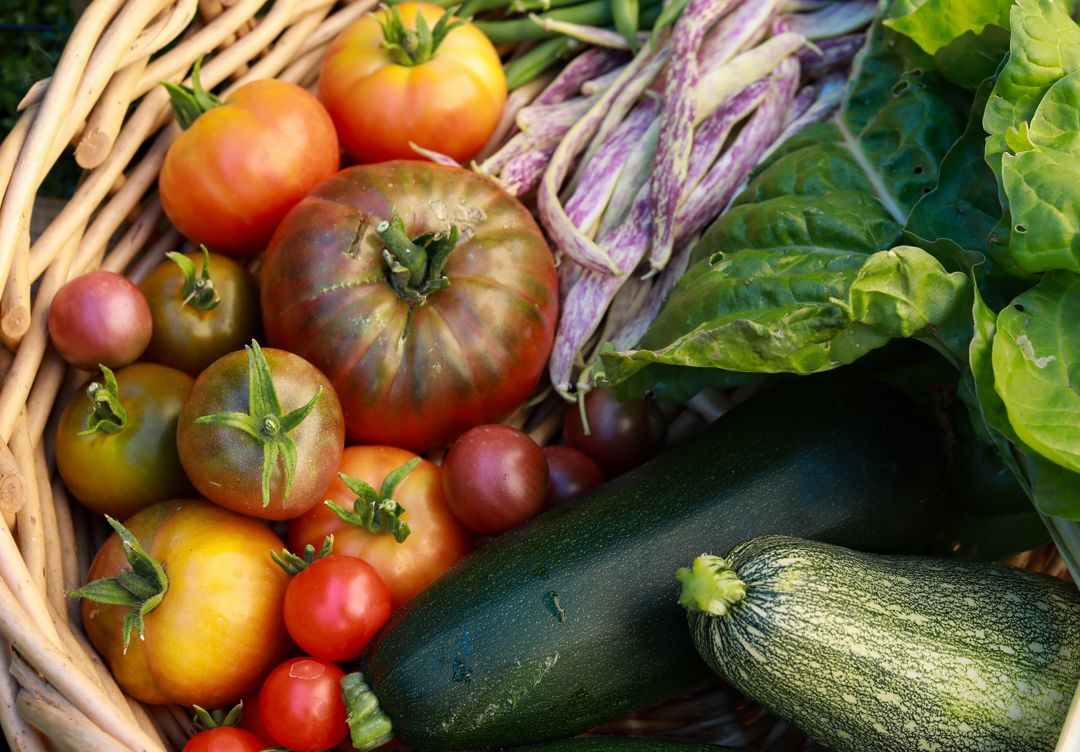Harvesting fresh veggies is the ultimate reward for all the time and care we invest in our gardens! When harvest time finally arrives it’s easy to just get out there and start picking, but there is a bit of technique involved to harvest properly. You’ll want to make sure to harvest vegetables at their peak, while also helping the plants stay healthy and productive.
How to harvest, and when to harvest, will vary for different crops:
How to harvest tomatoes
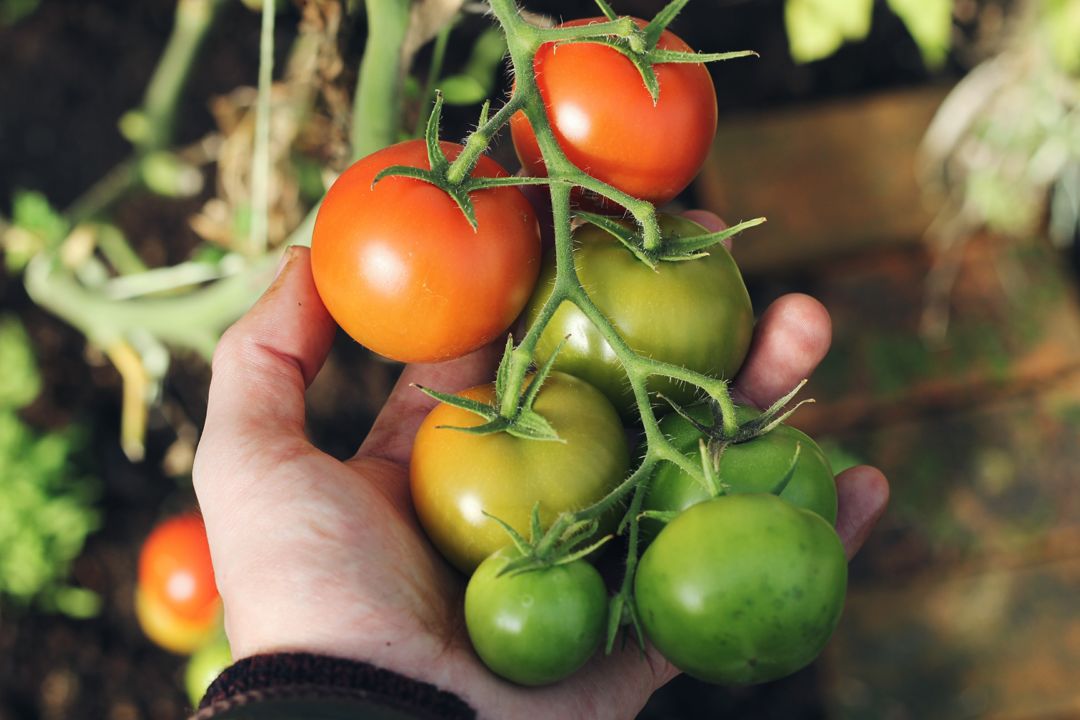
Tomatoes can usually be harvested by carefully snapping them off the plant- stabilizing the branch in one hand and gently pulling on the tomato with the other. In many cases the tomatoes will easily separate from the vine, although some varieties have sturdier stems than others. If you feel any resistance, or just want to be cautious, opt for fine-tipped pruning shears to cut the tomato free. If you use shears, it’s a good idea to sanitize them with rubbing alcohol when moving from plant to plant to prevent disease spread.
To decide when to harvest your tomatoes, there are some trade-offs between flavor and productivity to think about:
Tomatoes can be harvested when they are fully ripe. A tomato is fully ripe when it has reached the full-grown size and deepest possible color expected for the variety. To recall what size and color your tomatoes should be, use Planter to keep track of which tomato varieties grow where in your garden:
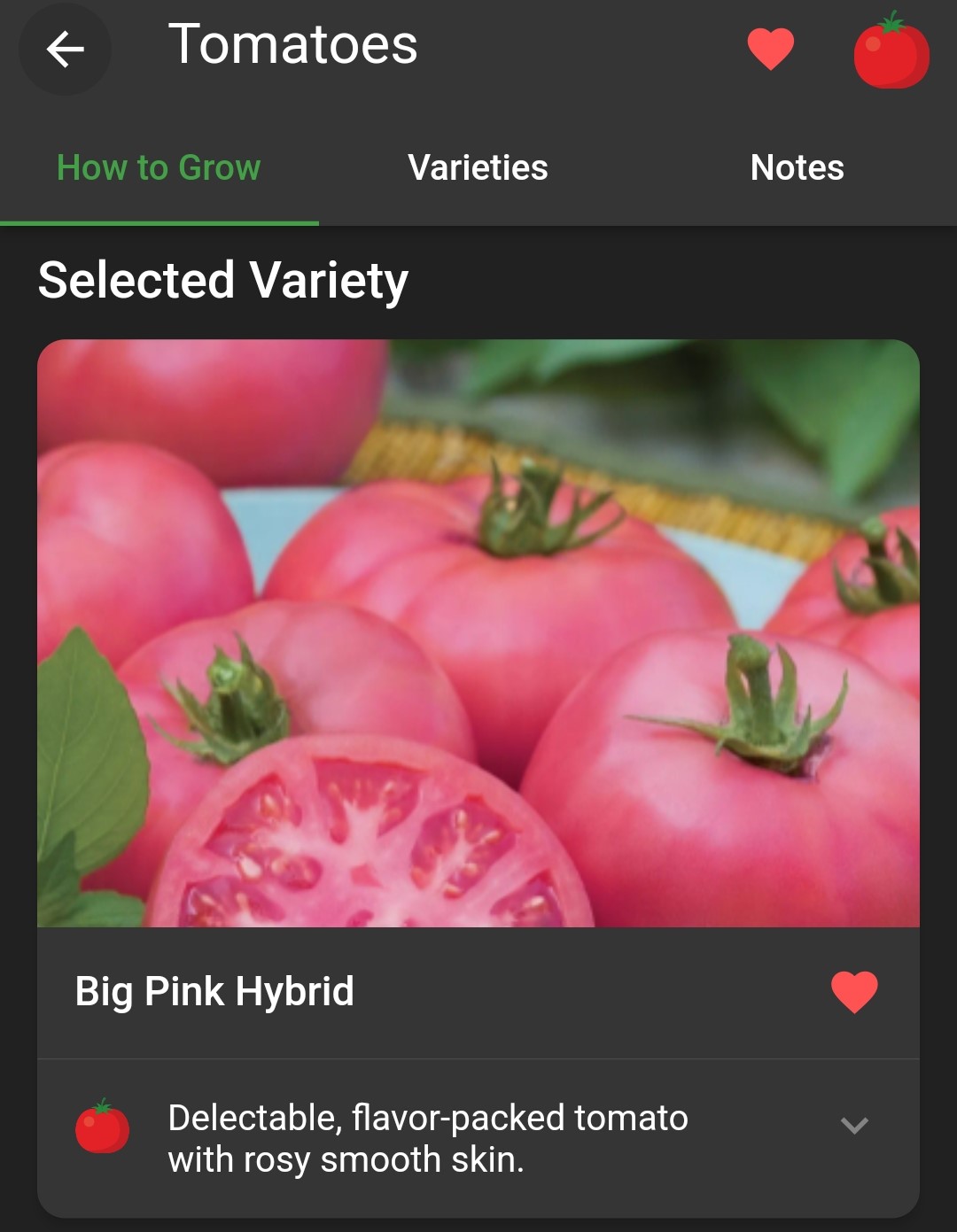
Many people believe that leaving tomatoes to fully ripen on the plant gives them the best flavor. But leaving tomatoes on the plant to ripen can have some drawbacks. First, the plant may produce less tomatoes overall as it continues to put some of its energy into the ripening fruit. Second, tomatoes left on the plant longer have a higher chance of being attacked by bugs or birds, or falling off and rotting. Or, sometimes you just need to get tomatoes off the plant as frost approaches.
As soon as tomatoes just barely start to change color from green to yellow, pink, or red*, they will be able to continue ripening off the plant. This is called the ‘breaker stage’ of ripeness. After harvesting, leave the tomatoes on the counter in a paper bag to ripen fully (do not put them in the fridge!) You can be the judge of whether tomatoes ripened this way have a noticeable flavor difference compared to those ripened on the plant!
*Green tomato varieties are an exception- you’ll need to gently squeeze the tomato to tell if it’s ripe. Ripe tomatoes should give slightly when squeezed; if it’s rock hard it’s not ripe yet.
How to harvest squash
How and when to harvest squash depends on whether you are dealing with summer squash, such as zucchini or pattypan, or winter squash, such as butternut or acorn squash. Summer squash can be gently twisted off the plant, but with this technique there is some risk of damaging the squash or the plant. To avoid this, it’s recommended to carefully cut the squash off with a knife, leaving about 1” of the stem on the squash.
Summer squash should be harvested as soon as the fruits reach the expected size for their variety. Once your summer squash plants start producing be sure to check the plant every few days for fruits that are ready to be harvested. Frequent harvesting will encourage the plant to keep on producing, and will help ensure the squash get picked before they become too large, tough, and seedy.
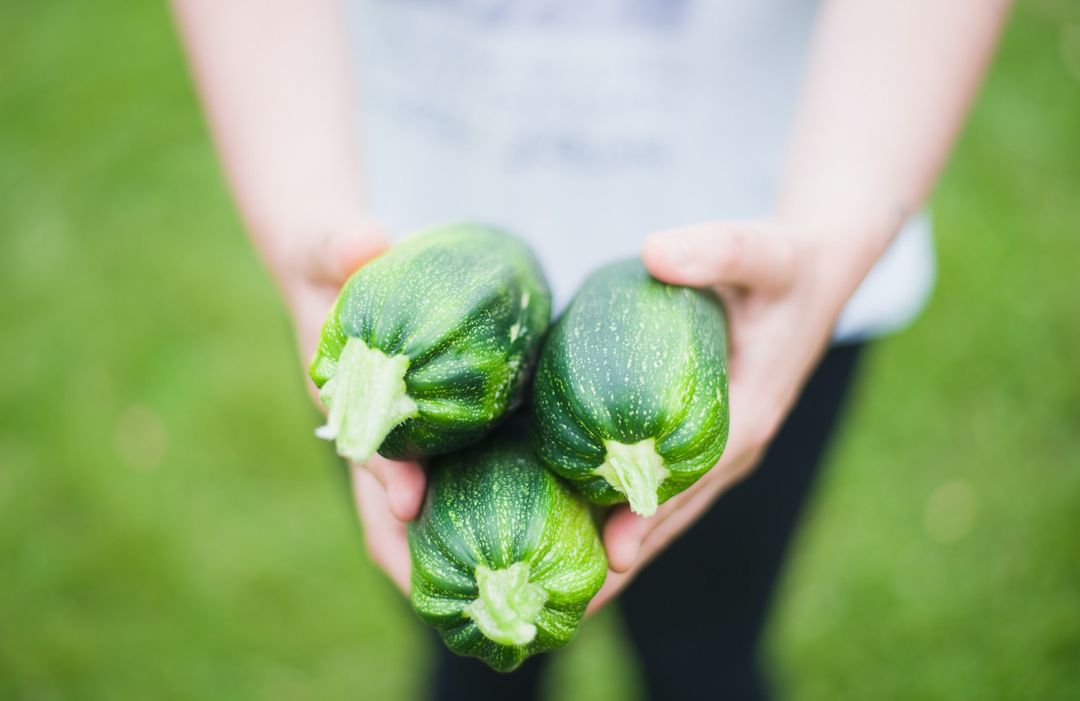
Winter squash should be harvested once the squash has reached full size and the skin has toughened up. Test this by gently pressing a fingernail into the skin - it should not puncture easily. When harvesting winter squash keep a 2” stem attached to the squash- keeping a bit of stem attached will help the squash last in storage.
How to harvest lettuce
There are two main approaches to harvesting lettuce. With lettuce varieties that produce a head, such as romaine or Boston, usually the entire plant is harvested once a sizable, firm head has formed. To harvest a lettuce head, gently tilt the plant to the side so the stem is visible and cut it underneath the leaves.
The other harvesting technique that can be used for lettuce is called ‘cut-and-come-again’, where only some leaves are removed from the plant at a time, leaving most of the plant intact to keep growing. Cut-and-come-again harvesting is typically used with “loose leaf” lettuce varieties. Cut-and-come-again harvesting can be done by cutting or plucking the lower (oldest) leaves off as close as possible to the stem, leaving the upper (newer) leaves intact. It’s also possible to slice leaves off by cutting across the top few inches of the plant. While slicing crosswise is faster than removing individual leaves, it can be easy to sever the growing stem- stunting or killing the plant.
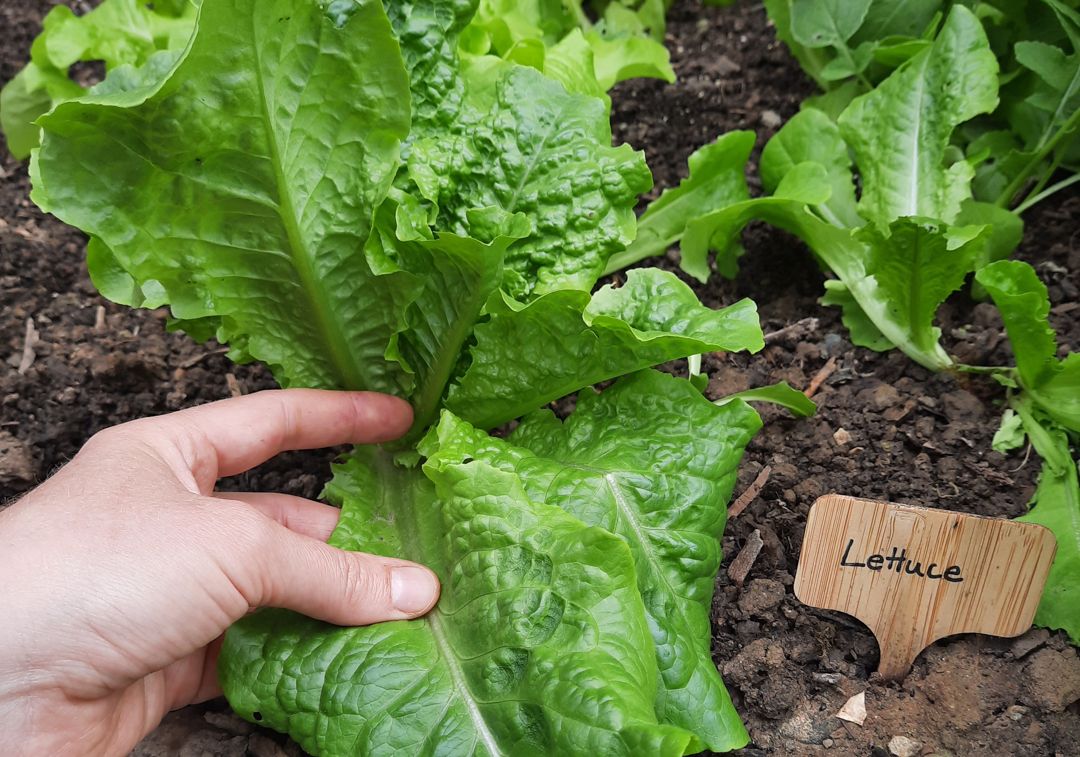
With either technique, be on the lookout for bolting which can cause your lettuce plants to turn unappetizingly bitter.
How to harvest peas and beans
When harvesting peas and beans, be careful not to yank on the plants as the stems can easily snap. Secure the plant in one hand and pull off pods with the other, ideally keeping a small piece of stem on the pod.
The trick with beans and peas is knowing when they are ready to be picked. There can be a fine line between not-ready-yet and too-far-gone, depending on the type of peas and beans you grow:
- For garden peas, the peas should be fully mature but still sweet. Snap peas should be harvested when the pods are tender and the peas inside are round and sweet. Snow peas are harvested when the pods are full-size but still flat.
- Snap beans should be harvested when the pods are full-size and the beans inside are not too mature and round. Shelling beans can be harvested when the beans inside have reached maturity but are still soft.
- If you are growing a drying-type pea or bean, things are a little bit easier- harvest when the pods are fully dry.
Harvest time is an exciting time in the garden; it’s the culmination of all the time and care you put into your plants. Following good harvest practices ensures you’ll get the best results for your efforts- veggies picked at their prime, and plants that keep on producing!
